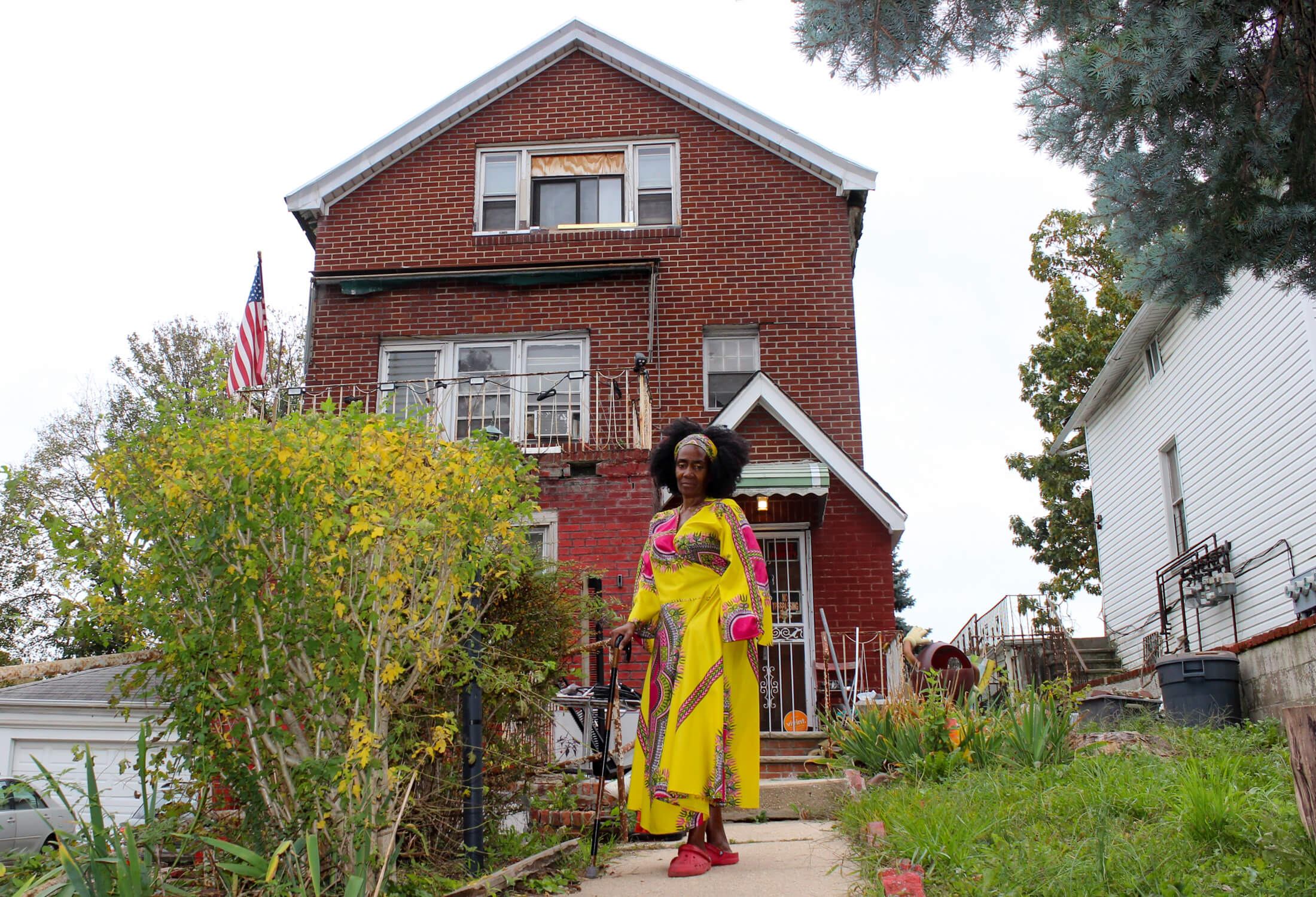Building of the Day: 233 New Jersey Avenue
Brooklyn, one building at a time. Name: Grace Baptist Church, formerly St. John Evangelical Lutheran Church Address: 233 New Jersey Avenue Cross Streets: Liberty and Glenmore avenues Neighborhood: East New York Year Built: 1897-98 Architectural Style: English Gothic Architect: Unknown Landmarked: No The story: Not all of the Germans who came to Brooklyn in the…

Photo: Kate Leonova for PropertyShark
Brooklyn, one building at a time.
Name: Grace Baptist Church, formerly St. John Evangelical Lutheran Church
Address: 233 New Jersey Avenue
Cross Streets: Liberty and Glenmore avenues
Neighborhood: East New York
Year Built: 1897-98
Architectural Style: English Gothic
Architect: Unknown
Landmarked: No
The story: Not all of the Germans who came to Brooklyn in the middle of the 1800s lived in Bushwick or Williamsburg. Many ended up following Bushwick Avenue into East New York, and settling there. A trip to Evergreen Cemetery to look at all of the elaborate headstones and mausoleums with Germanic names gives an indication of how many Germans, many quite prominent, lived in the area, well into the 20th century.
The new residents of East New York and Cypress Hills build on land bought from the original Dutch families who had farms here since the late 1600s. Houses were built, and businesses began moving over him from the more crowded areas of town, such as Williamsburg. Cultural institutions were also important as were houses of worship. In 1847, the St. Johannes Evangelisch-Lutherische Kirche was founded for members of this community.
This part of Brooklyn was settled from people from Hanover, Schleswig-Holstein, and Mecklenberg. Today, this area is called Lower Saxony, and borders the North Sea in northwestern Germany. The congregation bought three plots of land for $100, on New Jersey Avenue, near Liberty Avenue. There were 39 families in the area at the time, necessitating the building of a small wood-framed church, which cost them $1,800.
The church, as well as the community, grew. The church was enlarged in 1868, and a bell tower and large extension were added. They also built a large horse shed to accommodate the many parishioners who traveled great distances to get to church. By the end of the century, they had grown so much, the old church was bursting at the seams, and it was decided to build anew.
Part of the reason they were so popular may have been their refusal to conduct ceremonies in English. By the turn of the 20th century, many of Brooklyn’s German-speaking congregations had switched to services in English. Some churches had services in both languages, but as native German speakers got older, the younger generations wanted more, not less English. St. Johannes Evangelisch-Lutherische Kirche had refused, causing a group to split off and form an English speaking Lutheran Church called Lutheran Church of Reformation, on Barbey Street.
But by the time the church was in the process of building this current building, adding English had become mandatory to its continued existence. It would now be known as St. John’s German Evangelical Lutheran Church. The new building was consecrated on May 1, 1898, almost exactly 116 years ago. In 1910, the church added electricity and new lighting.
St. John’s was an active and busy church for almost another century. But by the 1960s and 70s, almost all of the German-Americans had moved away from the neighborhood, and the parish voted to disband in 1972. They sold the building to Grace Baptist Church of Christ, an African American congregation which has been in existence since 1962. The church building is a landmark in the community, and is an impressive church; an asset to the architectural heritage of East New York. They also have a lovely brick row house rectory, next door. GMAP














But then that would mean the end of the line for Brooklyn Norths gentrification. I do agree though, especially the Cypress Hills and City line sections of ENY. Just google map the church and look across the street to find brick row houses similar to what you would find in eastern Crown Heights, Windsor Terrace or Bushwick/Ridgewood.
Architecturally the area has examples of everything from Victorian, Wood-frame, and Brick row houses. There’s also a ton of empty/underutilized land, beyond repair homes and ugly non-historic buildings for new development. Add in Highland Park, all the transit options, and the gateway mall/national park near the Belt Parkway and you have one awesome neighborhood. Getting to Rockaway in the summer is really easy, 15-20 minute drive at most, 30 minutes on the A.